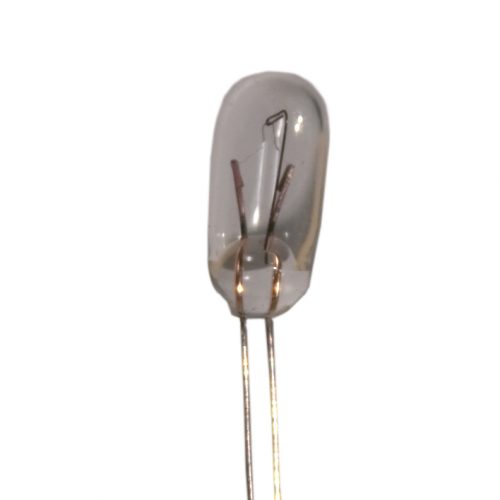We hear this problem all the time. Whether it is a bulb for a 1980 Corvette dashboard, Pioneer VU meter, Solid State Logic Audio recording console or Seeburg jukebox—to name a few—an exact replacement bulb may not exist.
More than 80% of the bulbs that we made 40 years ago are no longer being produced.
Bulbs themselves have become “vintage” but hope does exist! With some determination, an alternative is usually possible.
Considerations
Voltage:
Perhaps you need a 10V bulb that is no longer being produced but 12V bulbs of a similar model are still available.
In most cases, using a 12V bulb in place of a 10V will be just fine. As a general rule, if the voltage is within 3 volts of the voltage for your original lamp, it is a possibility.
If a 10V lamp is operated at 12V, it will glow brighter than specified when operated at 12V.
If an 8V lamp is operated at 6V, it will glow dimmer than specified when operated at 6V.
Here is a re-rating chart that will help you determine the outcome of brightness and life hours when the lamp is operated at a different voltage. This page offers additional information on lamp re-rating.
Based Bulbs/Pre-Socketed Bulbs
Some bulbs have a fixed base in which the glass bulb cannot be removed from the socket while some bulbs can be removed from the existing base or socket.


This is a common automotive dashboard bulb. Many bulbs like this one are no longer being produced. It can be hard to find one with the proper socket/base that fits into the PC board hole (which is very precise).
As the glass portion of this bulb cannot be just pulled out of the socket, most do not realize that the base/socket can be re-lamped.
The wires that wrap around the bottom of the base can be easily unwrapped and the bulb can be lifted out of the base. A new wire terminal bulb in the appropriate size can be selected and you can re-lamp your base/socket combination. We recommend taking note of how the wire is wrapped at the base bottom before you take it apart. Chances are you will need to refer to it when you insert the new wire terminal bulb.
As with the based automotive dashboard bulbs, if you can see the wire leads on the outside of the lamp base/socket, there is a good chance that your base can be re-lamped. If your lamp has a metal base—such as a bayonet or a screw base—it is not possible to re-lamp the base.
If your bulb has a little rubber color cap, it can often be salvaged and re-used if you remove it carefully.
The little rubber color caps can be easily inserted onto the new bulb by wetting the bulb top with rubbing alcohol, allowing the cap to easily slip on.


Wire Terminal type bulbs can often be used in place of obsolete bulbs
In many cases, wire terminal type bulbs can be soldered into place and used as a suitable replacement. If your equipment is subject to movement or vibration, this solution may not be idea because the wires are flimsy and the fragile bulb should not be allowed to bounce around. However, if it is being used in a piece of recording equipment or a jukebox this approach may serve as a quick fix.
AC vs. DC Voltage
Traditional bulbs will operate on AC or DC voltage unless otherwise specified.
The bulbs will last longer if operated on AC voltage. Using DC voltage will not affect the brightness. However, it will cut the life of the lamp in half.
Consider an LED Alternative
Replacing your bulb with an LED in a piece of vintage equipment is sometimes a good solution. Additional details on how to select an LED replacement for a legacy bulb are on the page Can I Replace My Bulb with an LED?




